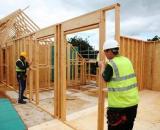The BWF has fed into the EC Circular Economy Consultation Questionnaire emphasising the benefits of using energy and materials from renewable sources, reducing harmful waste, and supporting durable and innovative products. We have prepared a briefing page on why wood is the material choice for the Circular Economy.
 The Federation also responded to the Technical Consultation Questionnaire on BRE’s Home Quality Mark (HQM). With the sun setting on the Code for Sustainable Homes, BRE feels that there could be a void in the marketplace for how new homes can be assessed for their sustainability performance. In response to this likely scenario, BRE has been working on a new concept called the Home Quality Mark which is focused on the home buyer in contrast to Ecohomes and the Code for Sustainable Homes which focus on the developer.
The Federation also responded to the Technical Consultation Questionnaire on BRE’s Home Quality Mark (HQM). With the sun setting on the Code for Sustainable Homes, BRE feels that there could be a void in the marketplace for how new homes can be assessed for their sustainability performance. In response to this likely scenario, BRE has been working on a new concept called the Home Quality Mark which is focused on the home buyer in contrast to Ecohomes and the Code for Sustainable Homes which focus on the developer.
BWF Policy & Communications Executive Matt Mahony commented:
"Our response emphasised that housing projects that could show major efficiencies in the build stage, for example where components are assembled quickly and efficiently, perhaps through effective use of off-site manufacturing, should be rewarded. Modern methods of construction mean that timber components can be pre-engineered off site and delivered ready to erect into a form or structure, saving time and reducing disruption.
"The energy and Carbon benefits of using timber were also addressed as, according to research by CEI-Bois, a 10% increase in the percentage of wooden houses in Europe would produce sufficient CO2 savings to meet nearly 25% of the total reductions prescribed by the Kyoto Protocol. This logic for reducing energy and emissions can now easily be applied to all products, whether it's increasing the use of timber joist or wood based panels, or windows, doors and stairs, and we should be seeking to exploit and promote the clear benefits of lowering the embodied Carbon in housing schemes in a way that allows for all such products to showcase their potential."